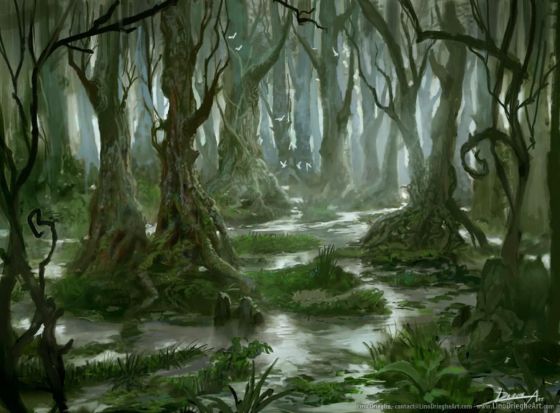Difference between revisions of "Wetland (range)"
Tao alexis (talk | contribs) |
Tao alexis (talk | contribs) |
||
| Line 39: | Line 39: | ||
* [[Megalania Lizard]] | * [[Megalania Lizard]] | ||
* [[Water Beetle (giant)]] | * [[Water Beetle (giant)]] | ||
| + | <br> | ||
<br> | <br> | ||
==== Tropical ==== | ==== Tropical ==== | ||
Revision as of 17:46, 28 September 2020
Wetlands are shore areas near to a freshwater lake or river. Similar areas adjacent to salt water are called intertidal lands. Wetlands include that portion of a body of water that is covered by shallow water that still receive enough light to enable common plants to live (about 15 ft.); the foreshore that is submerged in months of flood and exposed in dry seasons; and spaces generally within ¼ mile of open water, where creatures that live in water may be found roaming for food. Characteristics of separate wetlands may vary considerably, depending upon the climate, geology and distribution of water both above ground and beneath it.
Wetlands may be extensive, reaching miles from the main water source, or may be as narrow as a few feet. Land may be inundated, or the walkable ground merely soggy. In some wetlands, called marshes or bayous, there may be significant and dense vegetation; other smaller areas, called fens or bogs will be surrounded by shrubs and tall grass, or even short grass in taiga and tundra ranges. Standing water may be pure and clean, originating from aquifers, or brackish.
Wetlands do not include settlements, as hunting and fishing minimizes and disrupts the natural life. Wetlands that fall inside the influence of civilization are a form of rural environment.
Conditions
Travel through marshy wetlands will be onerous and unpleasant. Deep water must be traversed by boat, which usually must be driven with a pole or a single paddle, as trees and scrub do not favour rowboats. Crossing a wetland on foot will mean tramping or wading through soggy water, suffering leeches, flies and potentially knee deep mud below the surface. The odour of rot is overwhelming, and in both tropical and sub-tropical climes, the humidity and heat are unbearable. In a dense swamp, there is no movement of air. Both vegetation and water provide cover for dangerous creatures, which may leap out at any time.
Contrariwise, areas of lake shore, with open beaches, fresh clear water, opportunities for fishing and hunting, provide great scenery for a refreshing experience.
Common Features
Below is a list of elements and features that are common to wetland ranges:
Wetland Creatures
The following monsters are common to wetland ranges:
Temperate
- Capricorn
- Crayfish (giant)
- Electric Eel
- Frog (giant)
- Hippocampus
- Lamprey
- Megalania Lizard
- Water Beetle (giant)
Tropical
See List of Ranges
